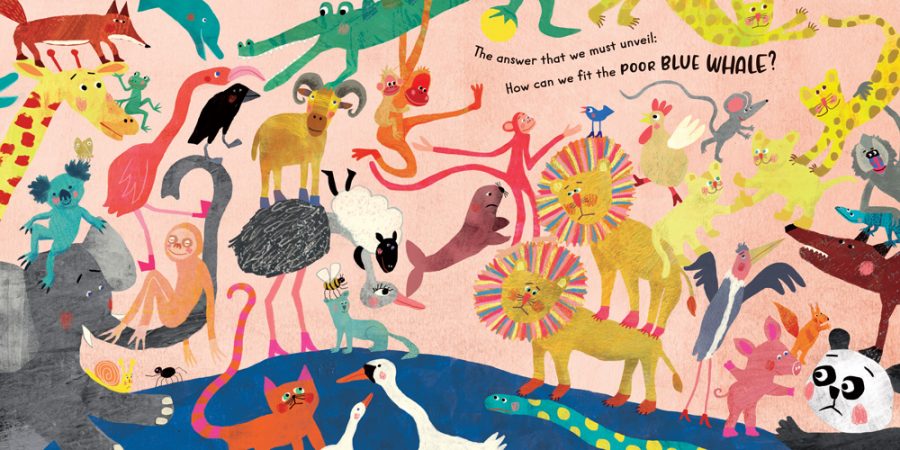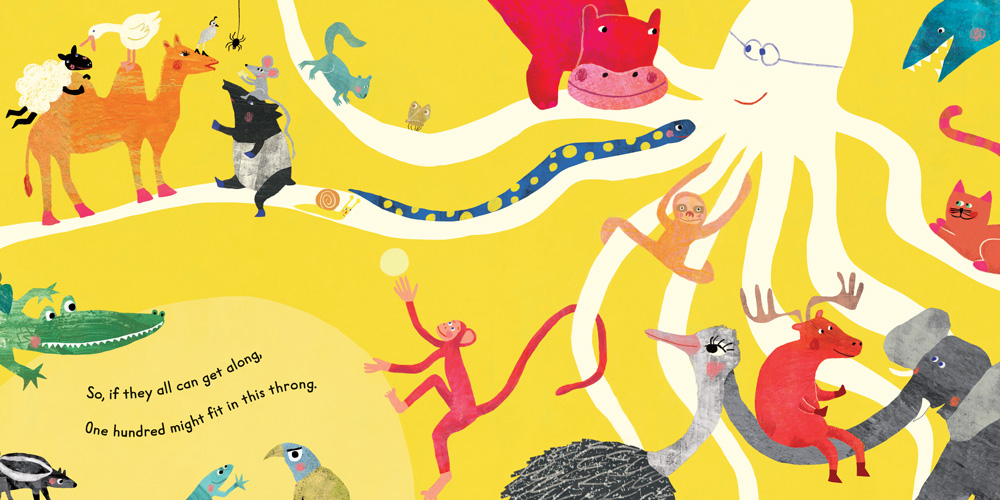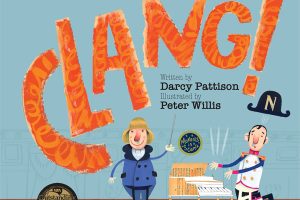
GUEST BLOGGER KAREN YIN
In Whole Whale, one hundred animals gather in the pages of the book to play, but as the pages fill up, the largest animal—a blue whale—is in danger of being left out. A compendium of unusual animals in a variety of categories, such as a rook, a tapir, a skink, and a quail, Whole Whale is bursting with diversity and opportunities for children to observe and appreciate animals that share our world.
Lesson goals
The following activities are designed to help your students:
- examine the thinking behind categories;
- explore similarities and differences across and within categories; and
- develop habits of mind, such as thinking flexibly; thinking about your thinking; creating, imagining, and innovating; and responding with wonderment and awe.
Materials needed
- a copy of Whole Whale
- pictures of animals (10 or more)
Step 1: Encourage curiosity and observation
Ask your students to study the animals in Whole Whale. (The animals appear together in the two pages that fold out and in the chart “Can You Find All 100 Animals?” at the end.) Then point out animals individually (“Tell me about the giraffe. What do you see on the top of the giraffe’s head?”) to encourage close examination. Once your students have had time to explore the illustrations, ask what they have in common. One answer could be red cheeks, the illustrator’s trademark! Making free-form observations prepares the students for the following activities.
Step 2: Make up categories
Ask your students to propose a system for categorizing the animals in Whole Whale. Start with a few categories and then adapt them as the children test out their sorting system. Your goal is to encourage divergent thinking and creative problem-solving. Some animals will fall under more than one category or none at all—use these exceptions to spark discussion of how all categories are made up and many are constantly changing. Categories may touch upon these aspects:
- colors
- sizes
- shapes
- appendages
- body coverings
- habitats
- behaviors
- eating patterns
Step 3: Notice differences within categories
Now that your students have created their own categories, ask them to examine one group at a time and point out the differences within each group to encourage the appreciation of diversity. You can begin by asking the following questions:
- Among the animals with legs
- Which ones have horns?
- Shells on their backs?
- Among the animals with arms, which ones have fingers?
- Consider the animals that live in the ocean. Which ones have no fins?
- Among the animals that live on land, which ones have whiskers?
- Out of all the birds, which ones have crowns?
- Among the insects, which ones cannot fly?
Step 4: Guess the category
Select three animal pictures (from the set) with something in common, and then ask your students to guess what your made-up category is. After a few rounds, invite your students to take turns selecting three pictures and inventing their own categories for the other children to guess.
Step 5: Make a personal connection
Ask your students about their personal connections to the animals that appear in Whole Whale. Some questions may include:
- Which animals are their favorites?
- Which animals would they like to meet or read about?
- Have they seen any of the animals around their neighborhoods?
- Which animal would they like to be?
Other resources
2-in-1 activity sheet for Whole Whale
Once you and your students complete the above activities, try this fun seek-and-find/coloring activity on Karen’s website.
Common Core State Standards alignments
- Mathematics: K.MD.A.1, K.MD.A.2, K.MD.B.3, K.CC, MP.2
Next Generation Science Standards (NGSS) alignments
- Earth’s Systems: K-ESS2-1, K-ESS2-2
- Earth and Human Activity: K-ESS3-1
- From Molecules to Organisms: Structures and Processes: K-LS1-1
Karen Yin is an award-winning writer and editor in Southern California. Her debut picture book, Whole Whale (Barefoot Books, 2021), is about making space for all. Her second book, So Not Ghoul (Page Street Kids, 2022), is about a little Chinese American ghost in bicultural limbo. Winner of the 2017 ACES Robinson Prize for furthering the craft of professional editing, Karen is also the founder of several acclaimed digital tools for writers and editors, including Conscious Style Guide, The Conscious Language Newsletter, and the Editors of Color Database. Conscious Style Guide was named by Poynter as a top tool for journalists in 2018 and is recommended by CMOS, SCBWI, SFWA, Poets & Writers, and NASA, among others. Find Karen online at KarenYin.com, on Twitter at @KarenYin, and on Instagram at @KarensOffice. Additionally, you can find her book recommendations at DiversePictureBooks.com.
- Goodreads: https://www.goodreads.com/karenyin
- Illustrator Twitter: @redcheeksfacts and Instagram: @redcheeksfactory











Leave a Reply
Your email is safe with me.